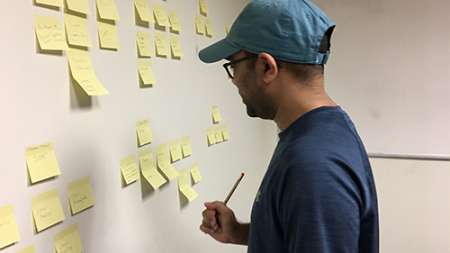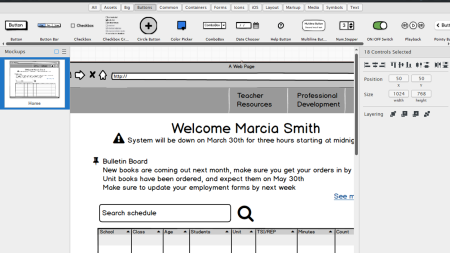
Related Class
Benefits of User Experience (UX) Courses
- Published on

I just completed a week of delivering a UX training course to an internal design team at a large company. The public UX classes I deliver draw a cross-section of designers, developers, business analysts, and project managers, while many of the private UX classes I deliver are focused on one functional area within a company. When teaching user experience design, regardless of the group, I work as both a teacher and a facilitator. As a teacher, I help participants understand design essentials, such as working with grids, type, and understanding space. Providing a foundation of design skills helps participants make informed decisions about their work. I also help ux class participants understand the design process, and make informed decisions that help create a better user experience. This process-driven approach to UX design is one of the most important pieces that participants take from the course. Learning how to approach design challenges allows you to make better decisions that can delight the end-user of your website, app, or product.
As a facilitator of the UX projects undertaken in the course, I work to make certain UX designs are focused on the needs of their intended users. This involves helping to improve and refine ideas, provide feedback, examining the use-case scenarios, and encouraging new perspectives as designs are created.
The benefits of participating in a UX class that includes a workshop environment go far beyond learning UX design principles and processes. Course participants gain from the opportunity to practice what they’ve learned, experience the complete UX process in a supportive environment where they can take risks, and receive feedback from peers and the instructor.
If you’ve found yourself grappling with user experience decisions, regardless of your role in your organization, you should consider enrolling in the regularly scheduled, public ux classes at American Graphics Institute. They provide valuable lessons to help you delight your users, bring your products to market faster, sustain better communication between interdisciplinary teams, and more accurately meet the needs of your users.
About the author
Jennifer Smith is a user experience designer, educator and author based in Boston. She has worked in the field of user experience design for more than 15 years.She has designed websites, ecommerce sites, apps, and embedded systems. Jennifer designs solutions for mobile, desktop, and iOT devices.
Jennifer delivers UX training and UX consulting for large Fortune 100 companies, small start-ups, and independent software vendors.She has served as a Designer in Residence at Microsoft, assisting third-party app developers to improve their design solutions and create successful user experiences. She has been hired by Adobe and Microsoft to deliver training workshops to their staff, and has traveled to Asia, Europe, India, the Middle East, and across the U.S. to deliver courses and assist on UX design projects. She has extensive knowledge of modern UX Design, and worked closely with major tech companies to create educational material and deliver UX workshops to key partners globally. Jennifer works with a wide range of prototyping tools including XD, Sketch, Balsamiq, Fireworks, Photoshop, Illustrator, and Blend for Visual Studio. She also works extensively in the fields of presentation design and visual design.
Jennifer is also an expert on Photoshop, digital image editing, and photo manipulation. Having written 10 books on Photoshop, and having consulted and provided training to major media companies and businesses around the globe.
Jennifer is the author of more than 20 books on design tools and processes, including Adobe Creative Cloud for Dummies, Adobe Creative Cloud Digital Classroom, and Photoshop Digital Classroom. She has been awarded a Microsoft MVP three times for her work with user experience design in creating apps for touch, desktop, and mobile devices. Jennifer holds the CPUX-F certification from the User Experience Qualification Board and assists others in attaining this designation in leading a UX certification course at American Graphics Institute. She is a candidate for a Master’s degree in Human Factors in Information Design.


